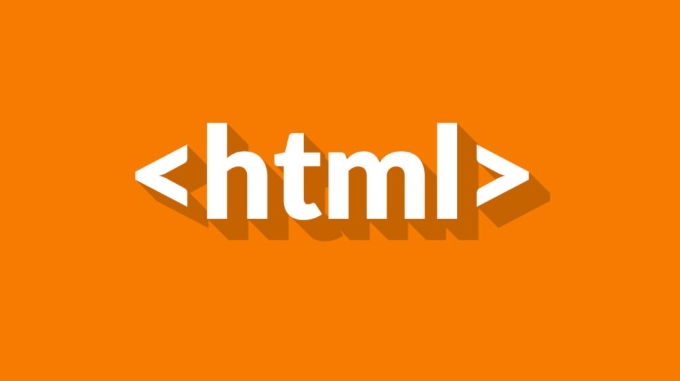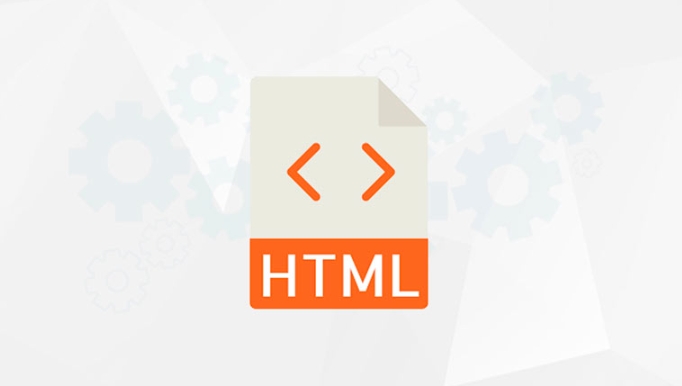The HTML dir attribute specifies text direction for proper rendering of RTL languages like Arabic or Hebrew. 1. Use dir="rtl" on the <html> tag to set the entire document’s direction. 2. Apply dir="ltr", dir="rtl", or dir="auto" to specific elements such as paragraphs, spans, or input fields to control localized text flow. 3. Use dir="auto" for user-generated content so the browser detects direction based on the first strong character. 4. Always pair dir with the lang attribute for better accessibility. 5. Avoid relying solely on CSS for text direction, as dir is more effective and semantically correct. 6. Test layouts with real multilingual content to ensure proper handling of punctuation and numbers. The dir attribute is essential for internationalization, ensuring correct layout, accessibility, and user experience without requiring complex code.

The HTML dir attribute is used to specify the text direction of an element’s content—especially important for languages that are written right-to-left (RTL), like Arabic, Hebrew, or Persian. It helps browsers render text correctly and ensures proper layout and accessibility.

You don’t need complex JavaScript or CSS to control text direction at the structural level—HTML’s dir attribute does it simply and effectively.
Where to Use the dir Attribute
You can apply the dir attribute to almost any HTML element. Common use cases include:

- Whole document (
<html dir="rtl">) - Paragraphs, headings, or inline text
- Input fields and form elements
- Tables or lists in multilingual content
The dir attribute accepts three main values:
-
ltr– Left-to-right (default for most languages) -
rtl– Right-to-left (for Arabic, Hebrew, etc.) -
auto– The browser determines direction based on content
Setting Direction on the Entire Page
To set the base direction for your entire document, use the dir attribute on the <html> tag:

<html dir="rtl">
<head>
<meta charset="UTF-8">
<title>RTL Page</title>
</head>
<body>
<p>??? ?? ?????? ??????? ????? ?? ?????? ??? ??????.</p>
</body>
</html>This tells the browser that the primary direction of the document is right-to-left. All block elements will inherit this unless overridden.
Overriding Direction for Specific Elements
You can change the direction for individual elements. For example, embedding an English quote in an Arabic paragraph:
<p dir="rtl"> ??? ????: <span dir="ltr">"Hello, how are you?"</span> ?? ????? ???????. </p>
Here, the surrounding Arabic text flows RTL, but the English quote is correctly displayed LTR.
Similarly, if you’re writing in English and quoting Arabic:
<p> He said <span dir="rtl">?????</span> with a smile. </p>
This ensures the Arabic word is rendered in the correct direction, even within LTR text.
Using dir="auto" for Dynamic Content
When you don’t know the text direction in advance (e.g., user-generated content), use dir="auto". The browser inspects the first strong character and sets direction accordingly.
<p dir="auto">????? ?? ?? ??????</p> <!-- Renders as RTL because the first strong character is Arabic --> <p dir="auto">Hello world!</p> <!-- Renders as LTR because the first strong character is Latin -->
Be cautious with auto—it only looks at the first strong directional character, so mixed or ambiguous content might not behave as expected.
Best Practices and Tips
- Always set
diron<html>for RTL languages – This affects more than text; it influences form inputs, table layouts, and some CSS behaviors. - Use
langwithdir– Combine language and direction attributes for better accessibility:<html lang="ar" dir="rtl">
-
Avoid relying solely on CSS – While
directionandunicode-bidiin CSS can control layout,diris simpler and supports accessibility tools better. - Test with real content – Some punctuation and numbers behave differently in RTL. For example, numbers in Arabic are still written left-to-right within RTL text.
Final Notes
The dir attribute is lightweight, semantic, and widely supported. You don’t need extra libraries to handle basic text direction—just use dir where needed. It’s especially crucial for internationalization and making your site usable across languages.
Basically, if your content includes RTL text, use dir="rtl" on the appropriate elements. For dynamic or mixed content, consider auto. Otherwise, you can safely rely on the default ltr.
It’s simple, but often overlooked—and getting it right makes a big difference in readability and UX.
The above is the detailed content of How to use the HTML dir attribute for text direction. For more information, please follow other related articles on the PHP Chinese website!

Hot AI Tools

Undress AI Tool
Undress images for free

Undresser.AI Undress
AI-powered app for creating realistic nude photos

AI Clothes Remover
Online AI tool for removing clothes from photos.

Clothoff.io
AI clothes remover

Video Face Swap
Swap faces in any video effortlessly with our completely free AI face swap tool!

Hot Article

Hot Tools

Notepad++7.3.1
Easy-to-use and free code editor

SublimeText3 Chinese version
Chinese version, very easy to use

Zend Studio 13.0.1
Powerful PHP integrated development environment

Dreamweaver CS6
Visual web development tools

SublimeText3 Mac version
God-level code editing software (SublimeText3)

Hot Topics
 Applying Semantic Structure with article, section, and aside in HTML
Jul 05, 2025 am 02:03 AM
Applying Semantic Structure with article, section, and aside in HTML
Jul 05, 2025 am 02:03 AM
The rational use of semantic tags in HTML can improve page structure clarity, accessibility and SEO effects. 1. Used for independent content blocks, such as blog posts or comments, it must be self-contained; 2. Used for classification related content, usually including titles, and is suitable for different modules of the page; 3. Used for auxiliary information related to the main content but not core, such as sidebar recommendations or author profiles. In actual development, labels should be combined and other, avoid excessive nesting, keep the structure simple, and verify the rationality of the structure through developer tools.
 How to group options within a select dropdown using html?
Jul 04, 2025 am 03:16 AM
How to group options within a select dropdown using html?
Jul 04, 2025 am 03:16 AM
Use tags in HTML to group options in the drop-down menu. The specific method is to wrap a group of elements and define the group name through the label attribute, such as: 1. Contains options such as apples, bananas, oranges, etc.; 2. Contains options such as carrots, broccoli, etc.; 3. Each is an independent group, and the options within the group are automatically indented. Notes include: ① No nesting is supported; ② The entire group can be disabled through the disabled attribute; ③ The style is restricted and needs to be beautified in combination with CSS or third-party libraries; plug-ins such as Select2 can be used to enhance functions.
 Implementing Clickable Buttons Using the HTML button Element
Jul 07, 2025 am 02:31 AM
Implementing Clickable Buttons Using the HTML button Element
Jul 07, 2025 am 02:31 AM
To use HTML button elements to achieve clickable buttons, you must first master its basic usage and common precautions. 1. Create buttons with tags and define behaviors through type attributes (such as button, submit, reset), which is submitted by default; 2. Add interactive functions through JavaScript, which can be written inline or bind event listeners through ID to improve maintenance; 3. Use CSS to customize styles, including background color, border, rounded corners and hover/active status effects to enhance user experience; 4. Pay attention to common problems: make sure that the disabled attribute is not enabled, JS events are correctly bound, layout occlusion, and use the help of developer tools to troubleshoot exceptions. Master this
 Configuring Document Metadata Within the HTML head Element
Jul 09, 2025 am 02:30 AM
Configuring Document Metadata Within the HTML head Element
Jul 09, 2025 am 02:30 AM
Metadata in HTMLhead is crucial for SEO, social sharing, and browser behavior. 1. Set the page title and description, use and keep it concise and unique; 2. Add OpenGraph and Twitter card information to optimize social sharing effects, pay attention to the image size and use debugging tools to test; 3. Define the character set and viewport settings to ensure multi-language support is adapted to the mobile terminal; 4. Optional tags such as author copyright, robots control and canonical prevent duplicate content should also be configured reasonably.
 Best HTML tutorial for beginners in 2025
Jul 08, 2025 am 12:25 AM
Best HTML tutorial for beginners in 2025
Jul 08, 2025 am 12:25 AM
TolearnHTMLin2025,chooseatutorialthatbalanceshands-onpracticewithmodernstandardsandintegratesCSSandJavaScriptbasics.1.Prioritizehands-onlearningwithstep-by-stepprojectslikebuildingapersonalprofileorbloglayout.2.EnsureitcoversmodernHTMLelementssuchas,
 How to associate captions with images or media using the html figure and figcaption elements?
Jul 07, 2025 am 02:30 AM
How to associate captions with images or media using the html figure and figcaption elements?
Jul 07, 2025 am 02:30 AM
Using HTML sums allows for intuitive and semantic clarity to add caption text to images or media. 1. Used to wrap independent media content, such as pictures, videos or code blocks; 2. It is placed as its explanatory text, and can be located above or below the media; 3. They not only improve the clarity of the page structure, but also enhance accessibility and SEO effect; 4. When using it, you should pay attention to avoid abuse, and apply to content that needs to be emphasized and accompanied by description, rather than ordinary decorative pictures; 5. The alt attribute that cannot be ignored, which is different from figcaption; 6. The figcaption is flexible and can be placed at the top or bottom of the figure as needed. Using these two tags correctly helps to build semantic and easy to understand web content.
 How to embed content from another site using the html iframe tag?
Jul 04, 2025 am 03:17 AM
How to embed content from another site using the html iframe tag?
Jul 04, 2025 am 03:17 AM
Use tags to embed other website content into your own web page. The basic syntax is:, you can add width, height, and style="border:none;" to control the appearance; in order to achieve responsive layout, you can set the size through percentage or use containers to combine padding and absolute positioning to maintain the aspect ratio, while paying attention to cross-domain restrictions, loading performance, SEO impact, and security policies. Common uses include embedding maps, third-party forms, social media content and internal system integration.
 HTML for email templates tutorial
Jul 10, 2025 pm 02:01 PM
HTML for email templates tutorial
Jul 10, 2025 pm 02:01 PM
How to make HTML mail templates with good compatibility? First, you need to build a structure with tables to avoid using div flex or grid layout; secondly, all styles must be inlined and cannot rely on external CSS; then the picture should be added with alt description and use a public URL, and the buttons should be simulated with a table or td with background color; finally, you must test and adjust the details on multiple clients.






